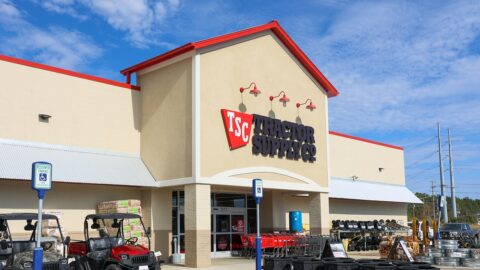By Bill Robinson, Senior Advisor, QuantiSense
In today’s market, it’s more important than ever for retailers to understand their customers and their buying patterns. If you don’t have exactly what your customers want in stock, it’s very likely that they’ll leave and find it elsewhere. Additionally, if you don’t know what customers tend to buy together, you could be missing out on huge revenue-driving cross-selling opportunities. Yet, surprisingly few of today’s retail managers, planners and executives make business decisions based directly on information regarding their customers’ purchasing behavior — a big problem for an industry whose very purpose is to fulfill the needs of their shoppers.
Collecting and analyzing customer transaction information is vital to everyone within the retail enterprise. Retail analytics can reveal valuable insight by linking the Market Basket to performance data at every juncture and organization level. While Market Basket analysis may previously have been viewed as appropriate only for the marketing department, it is now important for every chain and to every job function within the retail industry — Market Basket analytics is ready for prime time.
Advertisement
What’s a Market Basket?
The Market Basket is the manifestation of all of your strategies and operational execution. It shows:
- What the customer’s main purchase was;
- How she paid;
- How she accepted delivery;
- What other items she bought along with the main purchase.
The Market Basket also measures your effectiveness for winning and retaining good customers. In short, the Market Basket is what shopping is all about, and it is the essence of the retail business at the most basic level.
How did the Market Basket become invisible?
Most of today’s widely used ERP systems were conceived and developed when direct access storage was expensive. They typically summarize consumer transactions, keeping details for a few months and then dispatching them to offline files. Frequently, consumer transaction history is siloed for use exclusively within loss prevention and loyalty programs.
Valuable insight is hard to come by with the high-level metrics provided by these applications — and a lack of insight always means a lack of action. As a consequence, most buyers don’t know if their particular category is serving 30% or 80% of their stores’ customers.
During the past decade, software in the Business Intelligence and Data Warehouse world evolved as direct access storage became cheap. Together, these tools have the power to connect everything back to the customer transaction.
Insights gained from Affinity Analysis
Market Basket Analytics entered retail in the grocery sector with what is called Affinity Analysis. If you knew what customers tended to buy together, you could drive sales by promoting or merchandising them together: corn flakes and bananas, books and night lights, patio furniture and cocktail napkins. For example, if you run a men’s apparel store, what percentage of ties are also sold with shirts, belts with pants, cumberbunds with tuxes? If the percentages start to fall, it is time for remedial training, promotion, or some other intervention.
Affinity Analysis can be especially valuable in laying out Planograms, pages for catalogs or Web sites. In fact, online affinity often translates to in-store marketing.
How can you tell if promotions work?
Every retailer is looking to better understand the true value of promotions. You run a 20% off sale because you want to stimulate overall sales. Sales go up. But what is the impact on margin? Market Basket Analytics measures the pull of each item within a promotion. What gross margin did your store earn from the non-promotional items in the basket? What kind of customers did the promo attract? How did your best customers respond? The answers will inform your next promotion, and the ones after that.
Cross selling and upselling
Merchants take great pains to assemble cross-promotions with signs, displays and training. If you are in women’s fashion, you want to sell the outfit, as well as the garment. If you are in home, you want to supply a room, as well as a chair or table. Studying the market basket reveals whether your merchandising concepts are resulting in consistent cross selling. Measure the rate at which each item is sold with other items in the collection, group, or assortment. Which are the leaders and which are the followers?
Does your merchandise attract a value customer?
Value segmentation is useful to look at the size of the transactions, percentage of full price items, and gross margin achieved. For example, as a Planner for Women’s Sweaters, you’d want to know what percentage of customer transactions included a sweater — then, of those, what portion was high value, low value, etc. monitored over time. Similarly, Store Operations wants to see the value of transactions across geographical regions or at a specific time of day and week.
Repeat business
Customer frequency metrics are also very instructive to merchants and planners. What percentage of your Women’s Sweaters customers are New, Gold, Platinum, “Flight risks” and Inactives? From each frequency segment, what is the likelihood these customers will purchase more sweaters? How do your numbers compare with other departments? What is the trend? Is the pattern consistent across regions and channels? Are multichannel customers more or less likely to shop frequently?
Store Operations and Space Planners need frequency information to inform them how best to promote and place merchandise. A Space Planner will want to understand shopping frequency by Planogram. If a Planogram is only attracting the occasional customer, there is something wrong.
Brand and Lifestyle
So it goes with Brand and Lifestyle segmentation. You can infer brand loyalty based on shopping behavior. Is your customer buying national brands? If so, are the brands good, better, or best? What percentage of your best customers buy your house brands, generic brands, national? These insights help you align your brand mix strategy to your preferred customer.
It all boils down to listening to your customers – and realizing that everyone in the organization can put the valuable insight of Market Basket Analytics to work with customer transaction data and the right retail business intelligence tools. If you are not already doing so, now is the time to welcome Market Basket Analytics into prime time and make it part of your daily routine, no matter what your role in your retail enterprise.
As a Senior Advisor for QuantiSense focusing on market strategy, Bill draws from his 35 years of experience in providing technology-based solutions to retailers. Prior to joining Quantisense, Bill served as Vice President of Marketing for STS Systems, a leading provider of retail technology solutions with more than 300 clients. Throughout his career Bill pioneered successful applications in all areas of retailing, including Point of Sale, Business Intelligence, and Supply Chain Management. Bill’s deep background in, and passion for, the retail industry guides QuantiSense in its high level objective of delivering results oriented, innovative technology solutions for retail organizations. Bill is also a Professor of Marketing at Towson University in Towson, MD.














